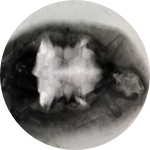About This Project
The worlds oldest known tortoise Hadrianus majusculus was collected from the Eocene San Jose Formation in the vicinity of Almagre Arroyo. It is approximately 53 million years old. The original specimen was a near complete shell filled with matrix. This was damaged along the mid-line obscuring the morphology of the neural bones and all internal structures. I intend to survey this area for additional specimens to fill in the gaps in our knowledge of these turtles morphology.
Ask the Scientists
Join The DiscussionWhat is the context of this research?
The oldest tortoise ever found Hadrianus majusculus was found in the vicinity of Almagre Arroyo in the late 1800's. This was written up by Hay (1904) and elaborated on in Hay (1908) based on the one complete shell. This specimen remains the only relatively complete specimen of this species ever found. This has limited our knowledge of this species and hindered research on its anatomy and relationships (Shockey and Vlachos, 2018).
What is the significance of this project?
Hadrianus majusculus is the oldest testudinid (tortoise) known and thus provides an important link to the origins of the Testudinidae from more basal turtles. Knowing precisely where it fits in the family tree of turtles and what traits associated with testudinids Hadrianus majusculus did and didn't have will help place it in context and provide clues to the geographic and temporal origin of their lineage. In particular the morphology of the neural bones has been controversial being described differently in different publications. Furthermore the internal surface of the plastron, limbs, vertebrae and skull are completely unknown. The skull in particular is highly used in turtle phylogeny. The limbs would provide a greater insight into the ecology of these early tortoises.
What are the goals of the project?
The goal of this project is to find additional specimens of Hadrianus majusculus that will fill in the gaps in our knowledge of its morphology. Furthermore, this will provide an additional test of if the original specimens morphological oddities were one off random events or true traits of this part of the testudinid lineage. We will start the expeditions in May 2019 as soon as the weather warms sufficiently to clear the roads. Once the specimens are collected they will be brought back to the New Mexico Museum of Natural History and Science for cleaning and study leading to a peer reviewed publication. The morphology of the neural bones, the internal surface of the plastron, limbs, vertebrae and skull are completely unknown and contain important characters.
Budget
These funds will pay for the expenses of traveling to a remote field area with rough roads for 3 weeks. This includes feeding and housing our volunteer field crew during the expedition.
Plaster bandages will be used for the timely preservation of small specimens, which often require additional support on their return from the field. This minimizes the need to bring additional supplies in the future. Additionally, we can cover specimens that cannot yet be transported in plaster to prevent erosion before we return to the site.
Endorsed by
 Project Timeline
Project Timeline
We plan to make three five day trips to Almagre Arroyo starting in mid-May 2019 following this the specimens found will be returned to the New Mexico Museum of Natural History at the end of field work. Within the next six months we will try to clean the specimens and describe any new anatomy of Hadrianus found as well as any other specimens found during this expedition.
Mar 08, 2019
Project Launched
May 13, 2019
Travel to Almagre Arroyo
May 31, 2019
Return specimens to New Mexico Museum of Natural History for Preparation
Nov 30, 2019
Complete preparation and have preliminary description of any new morphology
Meet the Team
Asher J Lichtig
I am a research associate with the New Mexico Museum of Natural History and Science. I have been fascinated with turtles for as long as I can remember and have been in particular fascinated with the fossil tortoises of New Mexico since being introduced to them in 2011. New Mexico is home to a continuous record of tortoises from their first global appearance almost until the modern day. This makes it an ideal area to study their evolution. I studied how to identify the paleoecology of fossil turtles for my masters thesis and continue to find this an interesting avenue of research. In particular the early members of the tortoise's evolutionary lineage are an interesting issue are they terrestrial like modern tortoises or more aquatic like their closest living relatives? Additional, details of these turtles morphology are necessary to firmly answer these questions. We hope through our research to reduce the assumptions involved in inferring these animals habits.
Lab Notes
Nothing posted yet.
Project Backers
- 6Backers
- 8%Funded
- $200Total Donations
- $33.33Average Donation


